Unholy Grail: the spaciest Speedy ever, the Omega Speedmaster ‘Teutonic’
D.C. HannayNo matter how tasteful your watch collection, no matter how stuffed your portfolio is with blue chip stocks like no-date Subs, classic Heuers, or the perfect Cartier Tank, there’s probably a black sheep lurking somewhere. Your questionable choices. Your dark secrets. The one that’s horribly out of fashion, objectively unattractive, or just plain bizarre. Be honest, something weird is lurking in the recesses of your watch box, or in the search history of your furtive late-night web trawling. Unholy Grail is a celebration of those polarising misfits, and truth be told, I have more than a few on my radar. Clearly, I have issues.
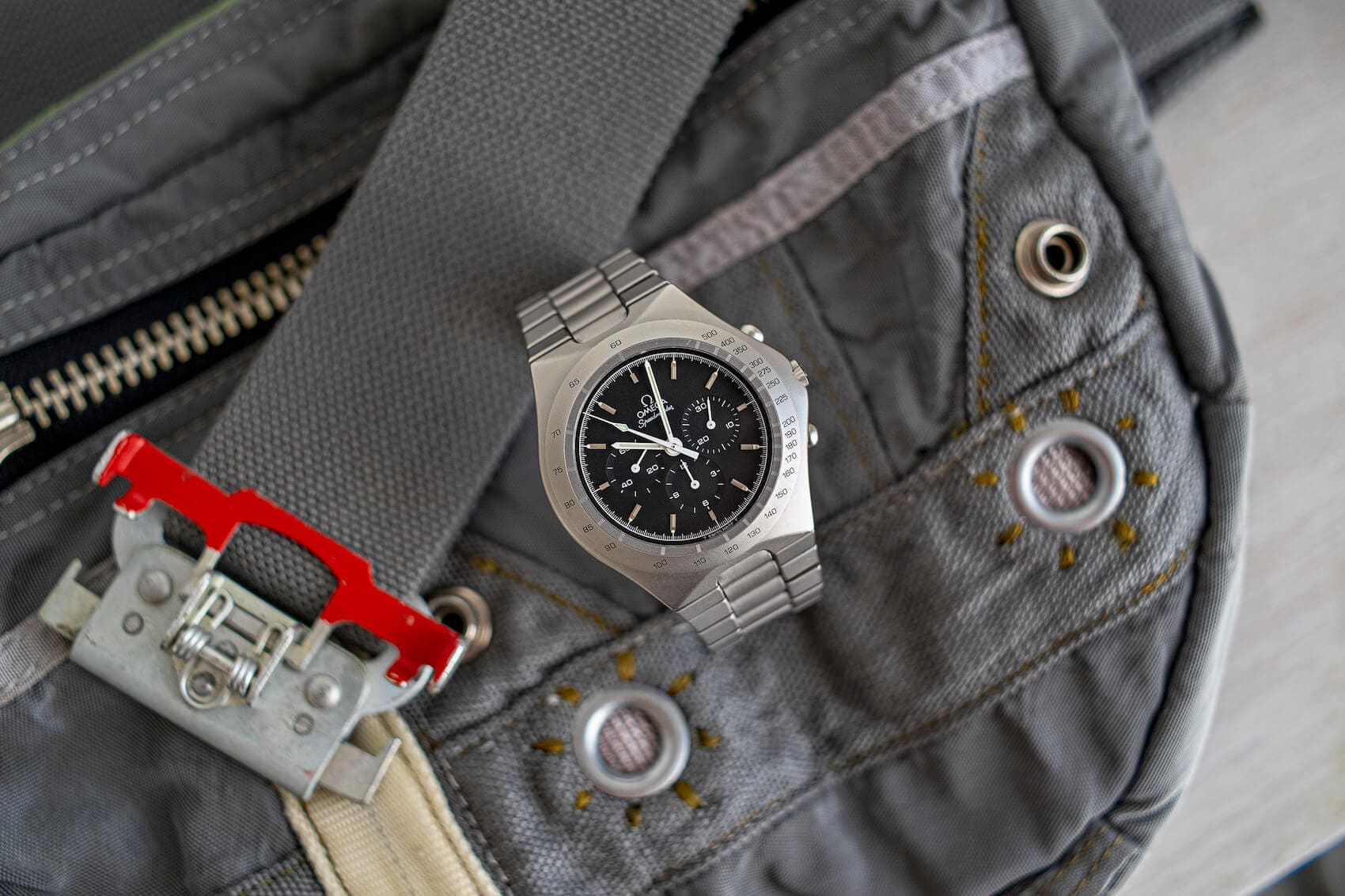
This instalment shines the horological Klieg light on the Omega Speedmaster Teutonic, one of the brand’s most outré models ever, and certainly one of the most singular Speedys ever released (and there are a lot of Speedy references). Produced only for a short while beginning in 1982, this avant-garde-looking number was reportedly destined for sale only in Germany and Switzerland. I can easily picture this on the wrist of a gloved driver behind the wheel of a Mercedes-Benz AMG 560 SEC, thundering down the autobahn with Kraftwerk blasting from the Becker cassette deck. Now, Omega is rightly known for the Speedmaster above all others in their deep catalogue, but this is not the watch that went to the Moon. In fact, it looks like it may have returned to Earth from a distant galaxy, or perhaps it’s a relic from an earlier era of Fritz Lang-influenced streamlined design. It’s still very much a product of the ‘80s, though, when the future was so bright, you had to wear shades.
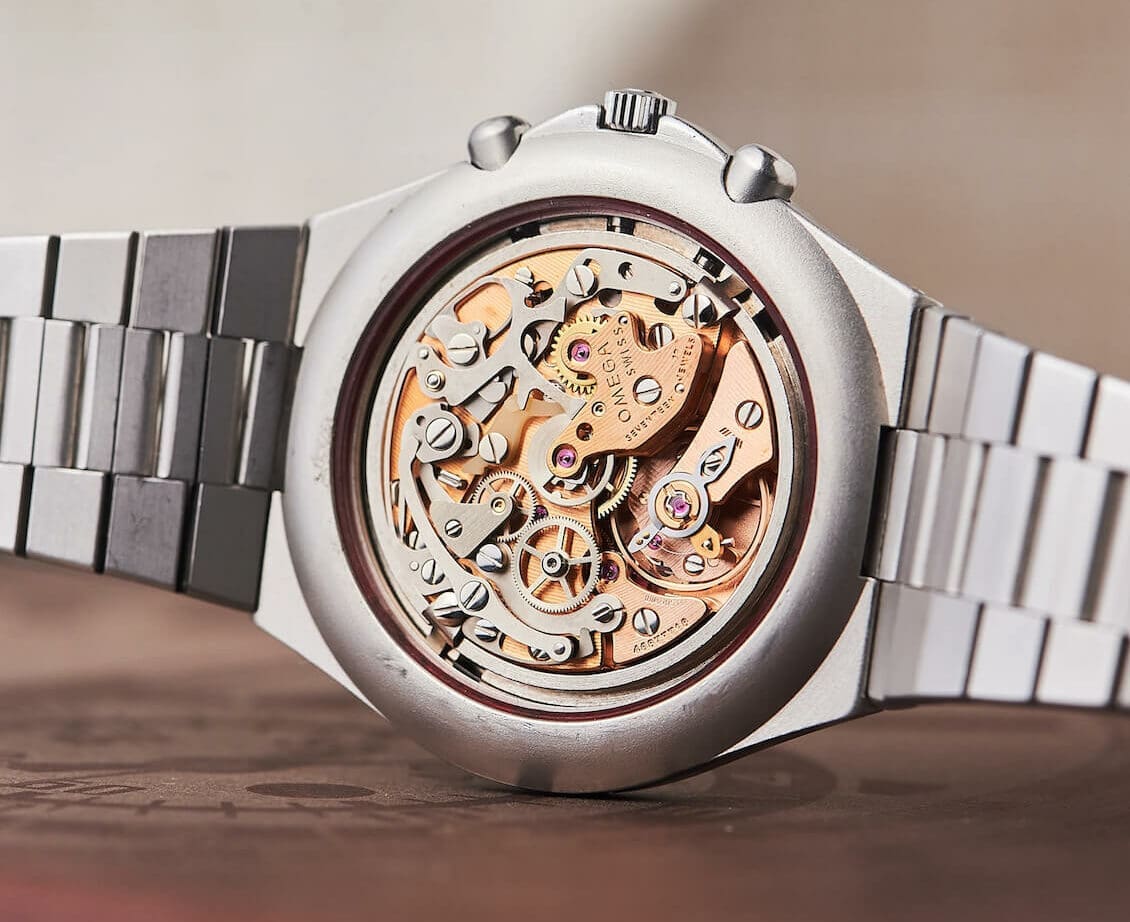
With its three-register chronograph layout and manually wound 806 movement, the Teutonic is most definitely a Speedy. In other words, the guts are the same as what you’ll find in many Moonwatches.
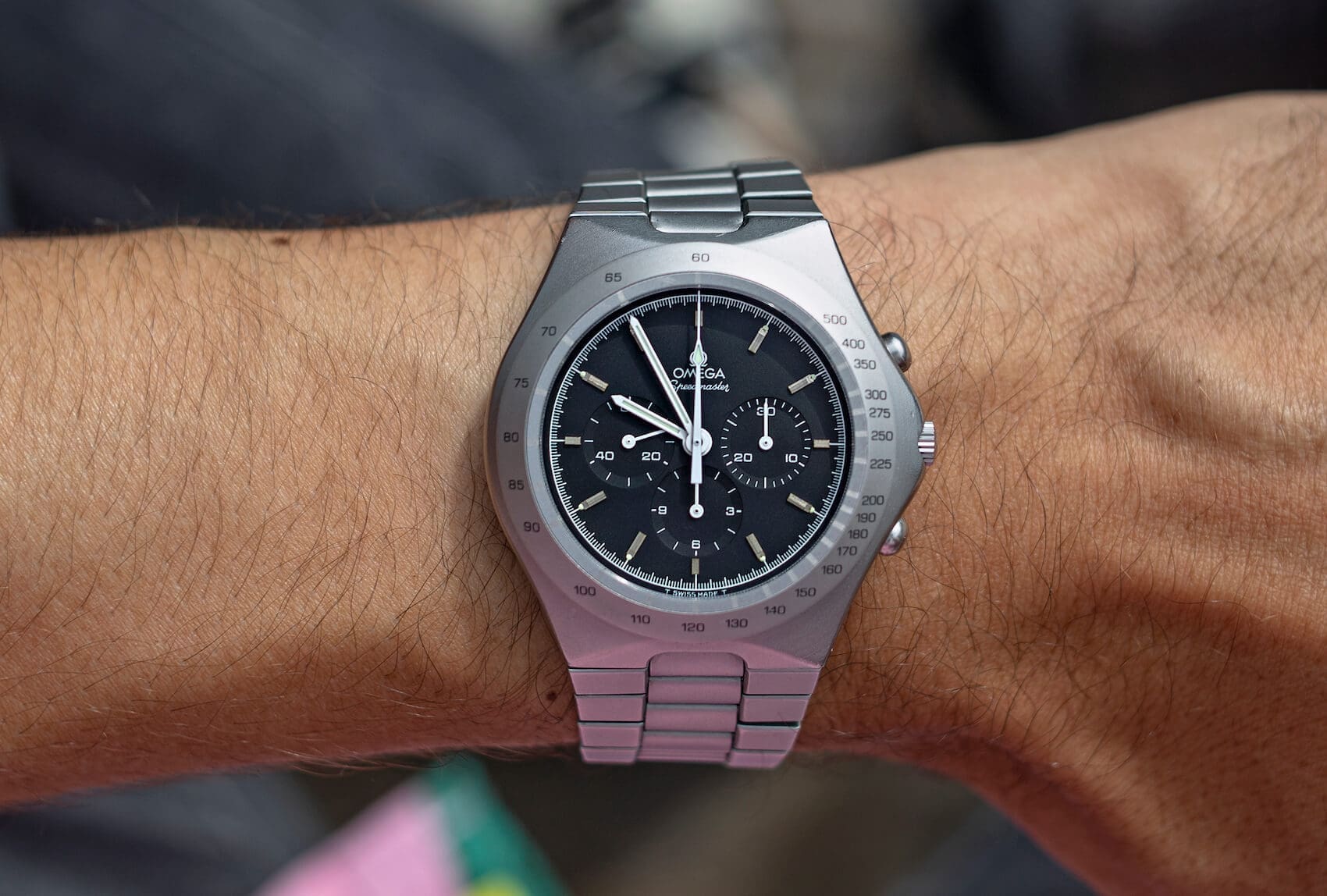
But it’s the bead-blasted 42mm case and integrated bracelet that set it apart. I love how it resembles some sort of Jony Ive-penned shuriken, with its lugs swooping up to a point, and the crown side of the case taking a similar tack. Oddly, all the Teutonic Speedmasters have a “Seamaster”-embossed caseback, although I’d never even show this one a picture of a glass of water.
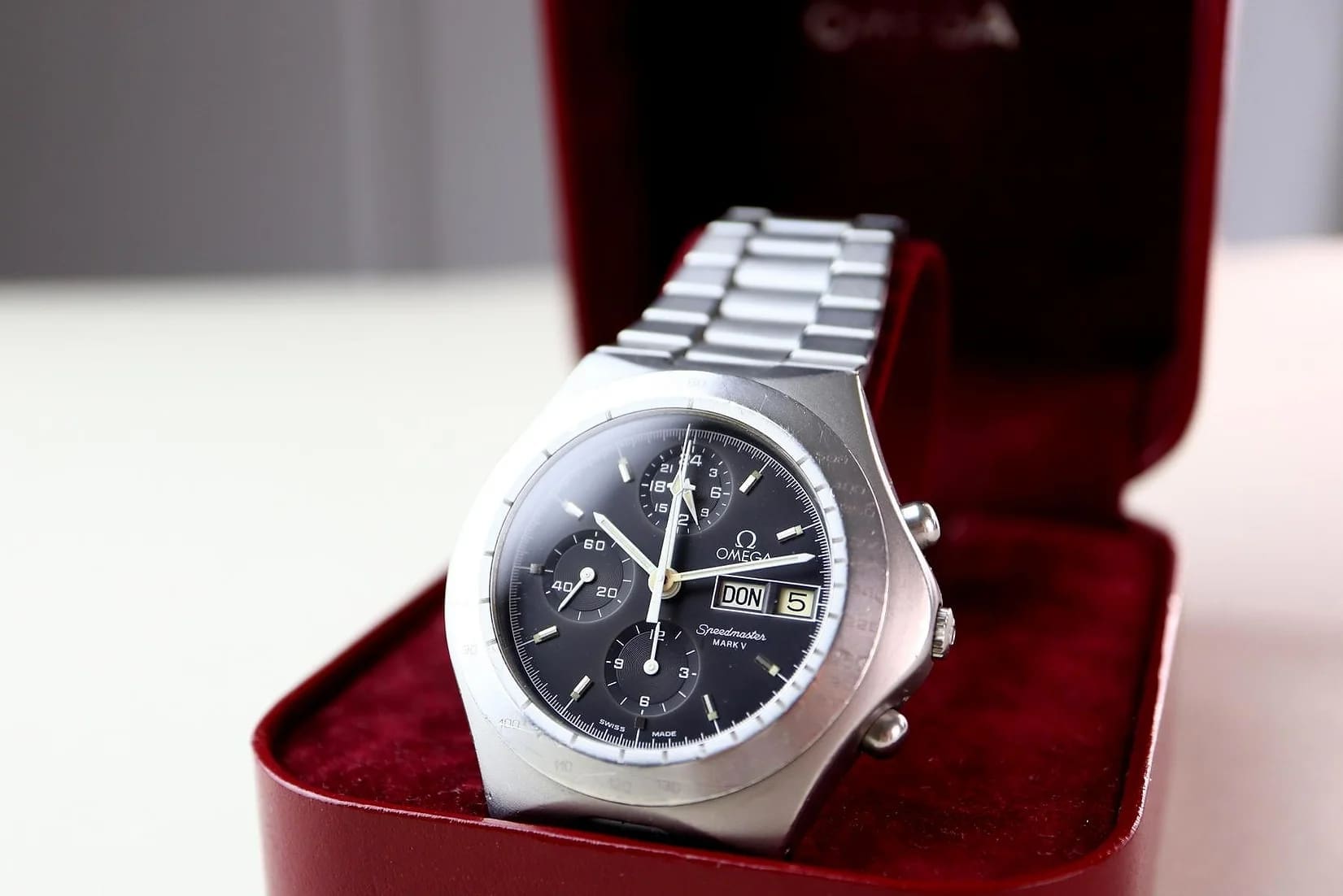
There were other iterations based on the aesthetic, including an auto-winding model (the “Mark V”), and a rare titanium moonphase version that was limited to just 400 examples. Honestly, the automatic versions veer too far off the path for me with their day/date complications, fussy hands, and askew subdials, so I’m sticking to the manual models.
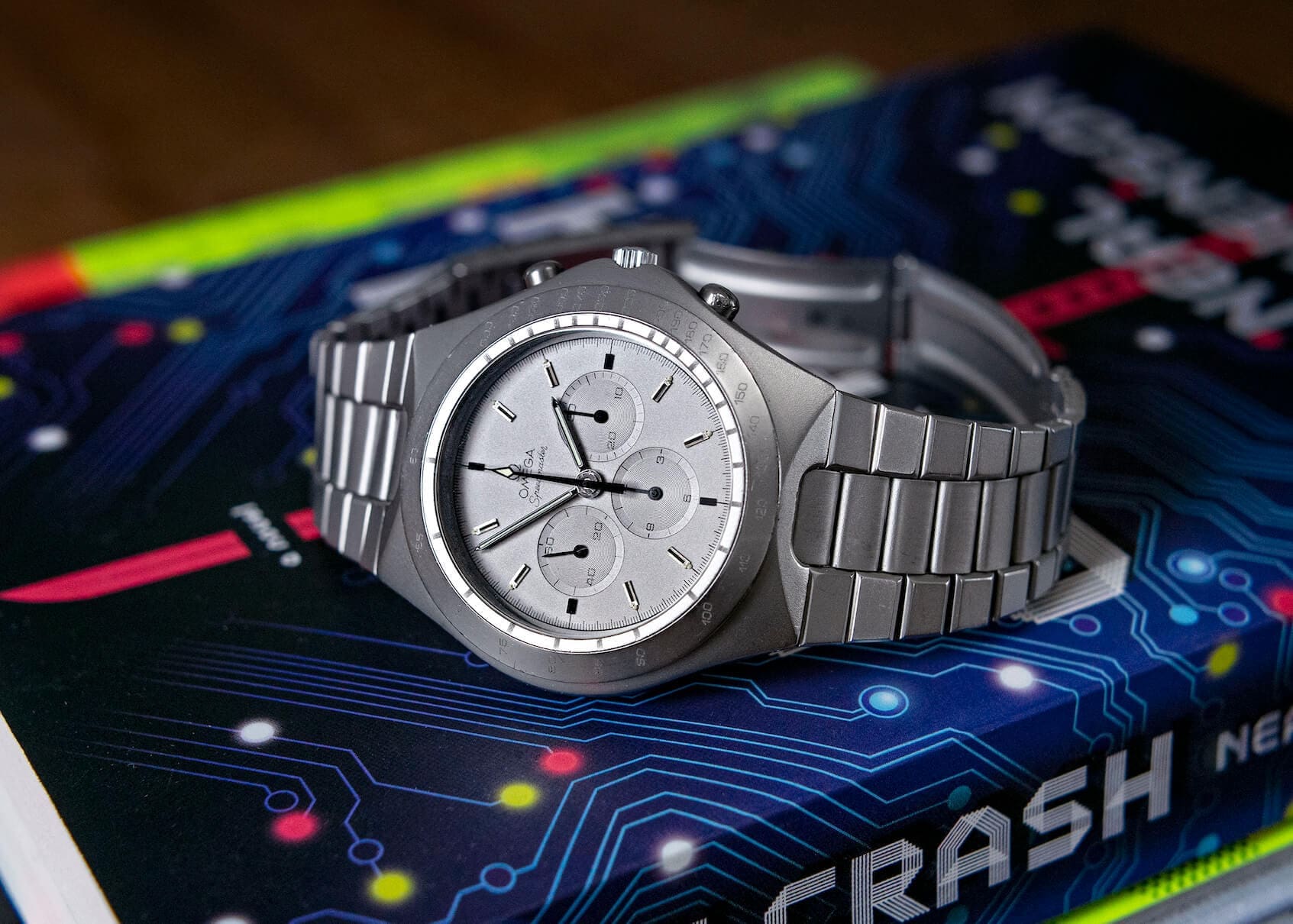
The clean, balanced dial layout is beautifully stark for a three-register chronograph, especially the grey version that echoes the matte-finished case and bracelet. It’s almost monochromatic, save the blackened hands and indices. The black-dialled version is a bit more on the nose for a Speedmaster, but includes little jolts of gold with the applied markers.
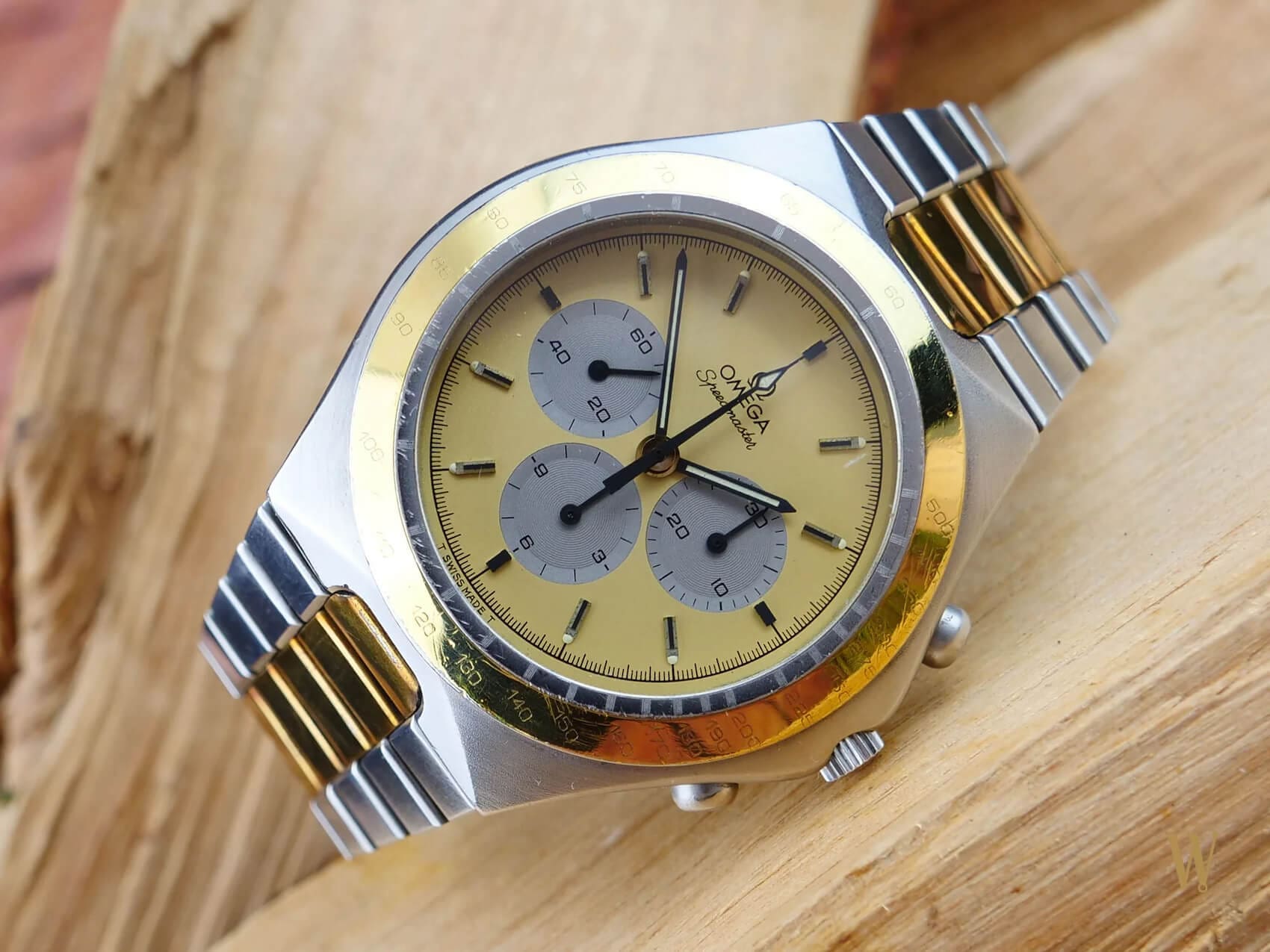
There are also two versions in two-tone, just to remind everybody of their ‘80s provenance: a black-dialled variant, and the over-the-top two-tone dial seen above. I have to say, these are a bit much, even for me. Although I’ve come to appreciate a well executed two-tone watch (hello, rootbeer GMT-Master), the gold plating on these two comes off a bit too loud and cheap for such a fine timepiece. Why, it’s downright undignified!

So, I’m all in on both the grey and black hand-winders. They’re functional yet minimalist all at once, and frankly, downright gorgeous to my eyes. The integrated design is fairly polarising: traditionalists turn their noses up at the utter departure from classic Speedys, but the Teutonic has its ardent fans, and you can count me among them.

I first laid eyes on one via Instagram pal Matt Smith-Johnson, a renowned designer who’s done work for Seals, Vero, Dietrich, and Laco, and goes by @teenage.grandpa on the ‘Gram. Matt has not one, but two extra-primo examples, and was kind enough to lend some rather spectacular images. According to Matt, “What first drew me in in is just simply that it was different, an unexpected form for a Speedmaster to take. I just love the curvilinear silhouette of the the case blending into the integrated lugs. Futuristic designs from the past give off a hopeful and positive vibe I enjoy.” Matt adds: “I wear them quite a lot, but I try to be careful. I have definitely added a few small nicks and scratches. Perhaps if there were more replacement parts available I’d be more reckless.” But therein lies the rub: really clean examples seem to be impossible to track down. I don’t know if it’s the nature of the bead-blasted finish, but most of the ones I see for sale are scratched to holy hell. Now I’m on the record as an enjoyer of beat-up tool watches, but you’d think there would be more unmolested survivors out there. Maybe the Teutonic was one of those watches that, due to how comfortable they are on the wrist, became daily drivers for their owners. Can’t say I blame them.
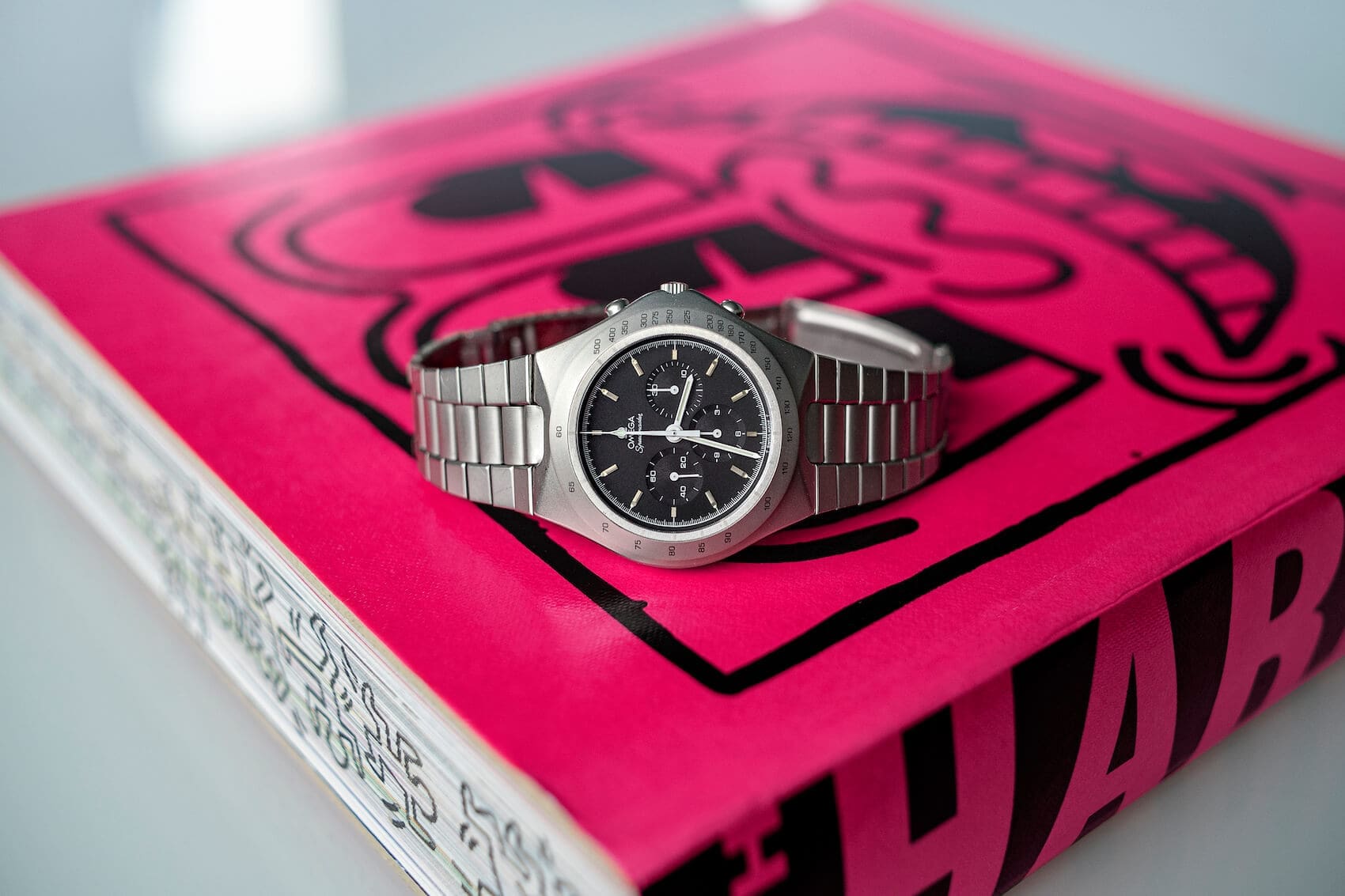
Brands are tripping over themselves raiding their back catalogues, looking for funky integrated designs ripe for reissue. So what’s stopping you, Omega? You’re on a roll. I feel the time is ripe for a modern-day iteration of this rare bird, but for God’s sake, don’t muck it up. Keep it the oddball, minimalist masterclass that it was in its heyday, and avoid the all-too-common temptation to start adding things. No date windows, no superfluous decoration, just leave it as is, an unconventionally beautiful piece of nearly-forgotten history. Bring it back the way we remember, Omega. Bring it back.




